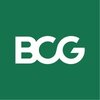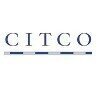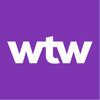


i
McKinsey &
Company
Work with us
![]()
Filter interviews by
McKinsey & Company Interview Questions and Answers
116 Interview questions
Reversing a list involves changing the order of elements to display them from last to first.
Use Python's built-in method: list.reverse() to reverse a list in place.
Example: my_list = [1, 2, 3]; my_list.reverse() results in [3, 2, 1].
Alternatively, use slicing: reversed_list = my_list[::-1] for a new reversed list.
Example: my_list = [1, 2, 3]; reversed_list = my_list[::-1] results in [3, 2, 1].
For a functional appr...
Convert two lists into a dictionary by pairing elements from each list as key-value pairs.
Use the built-in zip() function to pair elements from both lists.
Convert the zipped object into a dictionary using dict().
Example: keys = ['a', 'b', 'c'], values = [1, 2, 3] -> dict(zip(keys, values)) results in {'a': 1, 'b': 2, 'c': 3}.
I manage conflict incidents through proactive communication, de-escalation techniques, and thorough follow-up to ensure resolution.
Establish clear communication channels to address issues promptly.
Use active listening to understand all perspectives before responding.
Implement de-escalation techniques, such as remaining calm and using a neutral tone.
Document incidents thoroughly for future reference and to identify...
I have managed large volumes of data in my previous roles, ranging from terabytes to petabytes.
Managed terabytes of data in previous roles
Handled petabytes of data in data analysis projects
Experience with data storage and retrieval systems
Utilized data management tools and techniques
Implemented data governance policies and procedures
Transfer pricing is the setting of prices for goods and services sold between related entities within a company.
Transfer pricing is used to determine the cost of goods and services transferred between different divisions or subsidiaries of a company.
It is important for multinational companies to establish transfer pricing to ensure fair pricing and compliance with tax regulations.
Transfer pricing can impact a comp...
I have worked with SAP ERP software extensively in my previous roles.
Extensive experience with SAP ERP software
Proficient in modules such as Finance, Supply Chain, and HR
Implemented custom solutions and integrations with SAP ERP
Trained team members on using SAP ERP effectively
Basic accounting concepts include journal entries, payables, and receivables.
Journal entries are used to record financial transactions in chronological order.
Payables refer to money owed by a company to its suppliers or vendors.
Receivables are amounts owed to a company by its customers for goods or services provided.
Understanding these concepts is essential for accurate financial reporting and decision-making.
For ...
I am responsible for managing the transportation operations, ensuring timely delivery of goods and maintaining vehicles.
Coordinating with drivers and scheduling routes
Ensuring vehicles are properly maintained and serviced
Tracking shipments and updating customers on delivery status
Managing transportation budget and expenses
Debugging in Drupal involves using tools like Devel module, watchdog(), and error logs.
Enable Devel module for debugging information
Use watchdog() function to log messages to Drupal's watchdog log
Check error logs for PHP errors and warnings
Use dpm() function to print variables for debugging purposes
Services in Drupal are reusable objects that perform specific functions, such as database queries or sending emails.
Services are defined in YAML files and can be accessed throughout a Drupal site.
They are used to encapsulate reusable functionality and promote code reusability.
Examples of services in Drupal include the database service for interacting with the database, the mail service for sending emails, and the ...
McKinsey & Company Interview Experiences
241 interviews found
I applied via Walk-in
Interview Questionnaire
4 Questions
- Q1. There is a steel company with 2 plants in India. Now it has done recent acquisitions abroad. What should be the organizational structure that it should put in place in these places, and what are the pros a...
- Ans.
The organizational structure for the steel company's international plants should be a combination of centralized and decentralized structure.
Centralized structure: The company can have a centralized structure where decision-making and control are concentrated at the headquarters in India. This allows for consistency in operations, standardization of processes, and efficient resource allocation.
Decentralized structure: ...
- Q2. The IPL is a 20-20 league of cricket. It consists of city teams, with players from within the city, <21 years old, or players ‘bought’ via an auction process. Celebrities like Shah rukh khan own these team...
- Q3. There is a consumer finance company that is thinking of starting a unsecured loan at the point of sale in large retailers like Tesco, for consumers who want to buy white goods like TVs, fridges etc. Does s...
- Q4. There is a chairman of a conglomerate. He has been on the post for 10 years, and is extremely dominating. He treats the various business heads like children, not letting them take any major decision. While...
- Ans.
Identify 5 questions to address the dominating behavior of the chairman in a conglomerate.
Ask the business heads about their level of decision-making authority
Inquire about the chairman's communication style and interaction with the business heads
Gather feedback on the effectiveness of the performance management system
Assess the impact of the chairman's behavior on employee morale and motivation
Explore alternative lead...
Interview Preparation Tips
Experience: I asked him some clarificatory questions on where all in the world have the plants to get an idea of the kind of local areas. He replied in US, Indonesia, Trinidad etc. I then proceeded to succinctly put the problem statement to he and he was ok with it. Then I asked for “some time to structure my thoughts” ☺. The structure I laid out was: 1. What is meant by ‘organizational structure’? Is our end goal to figure out the number of levels in an organization, the number of people at each level and the skill they require? 2. Understand the goal of the organization: a cost focus or a responsiveness focus, whats important in this industry? 3. Map the existing processes that the company is involved in (value chain) and look at how best the goal of the organization can be served with: a. Existing company people redeployed to the new countries b. People from the acquired companies to continue working c. New people to be hired It seemed that he was looking for something else in the structure that I missed as indicated by his body language. However, he answered my queries – For point 1 he said I should look at a broader picture of what an organizational structure means. What I had defined was a very micro view. For point 2 he said I can assume an undifferentiated product market and that cost is the main focus. Here I pointed out that since we are acquiring he plants, the main concern in the short term maybe quick ramp up of the plant. He liked that and said that there are actually 3 measures that we will rate our structure on: - Ramp up time - Cost - Accountability of the plant employees of its performance For point 3 he said it might not be so relevant to our discussion!! Clearly I was in a situation where I didn’t know what hit me since I thought I completely missed what he wanted on 2 of my three points. However I kept calm and asked him what is the way to understand the org structure? He said think about how it was organized in ITC. So I said: 1. Since ITC is a conglomerate, it has a structure of various businesses or divisions which function independently. A ‘Corporate’ division is common to all. 2. Within each division there are functional verticals like the Marketing function, Technical function, HR, Finance functions. Shirish liked the way I described the structures in ITC so he said good. He said that that is a macro ‘Product’ structure of businesses around products like cigarettes, paperboards, clothes. Then he probed me on what could be other structures? I replied that the sub-structure of ‘Functions’ like marketing, HR etc could be the macro structure itself. He said that’s the 2nd, what else? Then we had a discussion on other kind of structures and he led me to two other kinds – ‘Geographical’ and ‘Type of Customer’. Then I started to list of pros and cons of each structure. However he said are you missing the criteria, so I quickly referred my notes and realized that he had given the 3 measures to rate each structure earlier – ramp up time, cost and accountability. I then ranked each on the above and after a discussion with him concluded that we should start with a functional set up to ensure quick ramp up and then move towards a geographical set up to ensure the local accountability, and minimization of costs. He was happy with the way I recovered and synthesized. He then went on to explain that actually they went in with the geographical setup directly, and the functional setup was a pseudo layer on top, as there were ‘functional specialists’ that traveled to a location to ensure quick ramp up. Then He said is there anything else I wanted to know from him. Then I told him that in our previous meeting we had not talked about the challenges of working with the govt sector. So he talked on that for around 5 mins.
Tips: 1. Proceed in the interview the way the interviewer wants you to. If he wants a free-flowing discussion, which was the case here once I laid out my structure, be flexible to do so. However, keep a track of open ends on your structure.
2. Don’t hesitate to ask the interviewer for help in case you are stuck. In my case it helped me a lot.
3. Don’t get flustered if stuck. Persevere and be calm.
Round: Case Study Interview
Experience: Clarificatory questions from my side helped me understand what happens when a company sponsors the tournament. He replied that the tournaments might be branded like “Gold Flake Open”, and the company gets rights like logos on uniforms and on the cricket grounds, title rights etc. I asked about the duration of the tournament etc. Then I took time and laid out the valuation framework. Discounted cash flow analysis and NPV calculation, for which we will discuss the revenues, costs, and the discount rate. I gave details of revenue sources, cost heads. He said lets focus on the revenue sources. Here my proposition was that there could be an increase in the number of people (Users) or the number of times existing users smoke (Usage) due to the advertising in the IPL. He seemed satisfied with this hypothesis and asked me to go on. So I sought to define first the target segments. There was a simple quant test here. I used the urban Indian population (since rural people smoke bidis predominantly) of 30% of 1B, and assuming a life expectancy of 60 years and that smokers start from the age of 20 years got a figure of 200M smokers in India. Out of this assuming 1:1 male-female ratio, we arrived at 100M male smokers (assumed females don’t smoke). He now told me that actually there are only 10M smokers in India. So then I discussed that now we have to delineate the factors why people take up smoking (purchase drivers), and clearly figure out those people who took up smoking by seeing the IPL advertisements or related promotions. Also I mentioned that this would be a challenge to do practically on the ground. So how does the 10M number change (market expansion or increase in users) was part 1, and how much more do the 10M smoke (usage) was the other effect we need to consider. Then heasked me how we can make sure that we convert the advertising into sales. I knew he wanted to get some creative answers, so I said maybe stock up in the shops outside the stadiums, or mobile vendors (and more suggestions I don’t remember now). I did mention that advertising is banned in India for cigarettes and we would have to be careful in the suggestions. He was happy with the discussion on the revenues part. He asked me where would the new smokers come from? Would they be new or would they come from competition brands? Then we discussed a lot on the kind of up-trading that happens in cigarettes, namely, people who smoke bidis move onto cigarettes, and people who smoke small length cigarettes move up and start smoking ‘kings’ type cigarettes. Finally we came onto the valuations part to understand what should be the money ITC should be willing to pay. I explained the free cash flow formula, and how we would use it over the years to calculate the NPV. We had a small summary discussion here. Then he asked me if he had any question for me. I asked him does he feel the urge to do more ‘implementation’ work in McK since he is a doctor, and that I feel that I might get bored of doing only ‘strategy’ kind of work. He resonated the feeling and explained in depth what projects he had done and that a large % is implementation.
Tips: Here he clearly told me that he was not interested in too much structuring, so I reduced my writing but continued to speak all my answers in a structured manner. The interviewer felt nice that I responded to his style. So point is, adapt yourself to the situation, yet maintain the poise in your answers, don’t completely relax. Also please use the opportunity in the end to ask questions that you really want to get answers of. Link them up with the background of the interviewer. This shows commitment and preparation, and builds a last minute connection with the interviewer. Also be clear of the intricacies of the business you came from, it helps a lot if the case dwells on a similar topic.
Round: Case Study Interview
Experience: Clarificatory questions included understanding the types of products sold in the point of sale, the various stakeholders involved in the transaction. The 2nd question hit a chord with , he smiled and said that there are three stakeholders, the Retailer (Tesco or someone else), the Consumer Finance Company, and the Consumer. I knew at this point that I had to concentrate on each one separately. I laid out a simple structure of looking at the costs and benefits (or positives and negatives) for each stakeholder by getting into the scheme. He was ok with this, in fact he said this is exactly how it should be looked at. I started with the Retailer and said that there are only benefits since they get the sales revenues that earlier were not got since the consumers did not have funds. So the Retailer clearly wanted the scheme. For the Consumer Finance company I said that the cost would be the cost of raising the money to fund the loans which would depend on the default rate of these consumers. The benefit would be the interest that the consumer would pay on the loan. Then we had a discussion on how to estimate this default rate. Here I said we could use data from similar loan schemes in other countries since the type of product and the cost of the white goods (20-40K in this case) plays a role, or default rates on loans on other products in the particular region, since location and local demography also plays a role. Another benefit could be that a consumer finance company could occupy mind space with the consumers who might buy other products like home loans, car loans etc from the company in future. Overall, a consumer finance company might be keen to enter into this loan. For the consumers, He asked why would a consumer buy a loan from this company and not go the branch elsewhere and take a loan. I said that the convenience of getting the loan at the point of purchase was the single largest factor for the consumers. Also I added that now they would be able to purchase high value items higher in prestige value that they could not afford earlier, so impulse purchase might increase.On the whole, based on a discussion with he, I concluded that the consumer finance company would need to be cautious in proceeding with the loan since the default rates are not predictable. He inquired a way to solve this problem and I suggested that the loans be launched for selected products and consumer segments to start with as a pilot, and then expanded to other products and consumers.
Tips: Asking relevant questions in the beginning of the cases really helps as the interviewer starts helping you more, or will reveal information that would be critical in the case. Prepare the basic questions on leadership and teamwork well. This means they should be personalized, not the typical definitions. The examples should be crisp and explain the point well. Showing energy and impact during such answers is crucial otherwise they might appear faffy. At times when he was having a stone expression, I tried to smile and break him out of that mould.
Round: Case Study Interview
Experience: Since this was not a typical case, I broke out of the case mould and immediately asked for some time to think of the questions. I told him that I would follow a predecessor-based questioning model, simply put, subsequent questions would depend on the answers of the previous questions. He liked this approach. My 5 questions were as follows:
1. Select the business which has a large contribution to the conglomerate’s overall revenues, and ask the business head (who reports to the chairman): How many decisions has he independently taken in the last 12 months vs how many has he just implemented decisions of the chairman?
2. Based on the response of the first question, ask the business head what has been the impact both: a. On the individual business (to the company) performance: Company is not doing well, and the situation needs to be corrected/company is doing average/company is doing good. b. On the business head himself (to the individual) morale: He is thinking of quitting immediately/in some time/not at all. Based on these questions we would come to know the real impact of the chairman’s behavior on the company and the immediate reportees.
3. If the problem is serious, ask the business head which section of the employees are affected the most by the chairman’s decisions, say, mid level and shop floor level
4. and 5. Ask the mid level and shop floor level employees the same two sub-points as in question 2.
The questions should seek to address: - Verify whether there is a problem at all - Verify the extent of the problem - Verify the seriousness of the problem.
He seemed satisfied by the questions and the summary. That’s all he wanted to hear in the case, and I was also relieved☺.
Tips: here will always be cases you have not prepared for. Use common sense, and try to use your work experience to think of substance, and then put it in an easy to understand structure to communicate to the interviewer. Also try to enjoy the process. After multiple rounds of interviews, I had gotten over the fear of cases, and was smiling a lot and enjoying the process. Spend time with the alums from the various firms who would be coordinating the process, they will help calm nerves and give a good perspective on the proceedings.
Skills: Case Solving Ability, Case Analysis
College Name: Indian School Of Business (ISB)
I appeared for an interview in Aug 2024.
Excel test
Logical Reasoning test
Quantitative aptitude test
An extensive case study for the corporate tax team that includes knowledge of US GAAP and transfer pricing.
(2 Questions)
- Q1. What are the fundamental accounting concepts, accounting entries, and the applicable tax rates for various services?
- Ans.
Fundamental accounting concepts, entries, and tax rates for various services.
Fundamental accounting concepts include accrual basis, matching principle, and consistency.
Accounting entries for services typically involve recognizing revenue and recording expenses.
Applicable tax rates vary depending on the type of service and the jurisdiction.
For example, consulting services may be subject to a different tax rate than soft...
- Q2. What is your understanding of transfer pricing and its applicability?
- Ans.
Transfer pricing is the setting of prices for goods and services sold between related entities within a company.
Transfer pricing is used to determine the cost of goods and services transferred between different divisions or subsidiaries of a company.
It is important for multinational companies to establish transfer pricing to ensure fair pricing and compliance with tax regulations.
Transfer pricing can impact a company's...
(2 Questions)
- Q1. What is the amount of data you have managed in your previous roles?
- Ans.
I have managed large volumes of data in my previous roles, ranging from terabytes to petabytes.
Managed terabytes of data in previous roles
Handled petabytes of data in data analysis projects
Experience with data storage and retrieval systems
Utilized data management tools and techniques
Implemented data governance policies and procedures
- Q2. Which ERP software have you worked with?
- Ans.
I have worked with SAP ERP software extensively in my previous roles.
Extensive experience with SAP ERP software
Proficient in modules such as Finance, Supply Chain, and HR
Implemented custom solutions and integrations with SAP ERP
Trained team members on using SAP ERP effectively
(2 Questions)
- Q1. What are your salary expectations and how do you approach negotiations?
- Ans.
I approach negotiations by researching industry standards and emphasizing my value to the company.
Research industry standards for the position to determine a reasonable salary range.
Highlight your skills, experience, and achievements that make you a valuable asset to the company.
Be prepared to discuss and negotiate benefits and other perks in addition to salary.
Stay professional and respectful during negotiations to ma...
- Q2. What is your preferred joining date and the notice period required by your current organization?
- Ans.
My preferred joining date is in one month and my notice period is two weeks.
Preferred joining date: one month from now
Notice period required by current organization: two weeks
Flexible with joining date if needed
Interview Preparation Tips
I applied via Referral and was interviewed in Oct 2024. There were 2 interview rounds.
The aptitude test was interesting, Had a bunch of fun puzzles
(2 Questions)
- Q1. Tell me about yourself
- Ans.
I am a detail-oriented business analyst with a strong background in data analysis and problem-solving.
Experienced in gathering and analyzing business requirements
Skilled in creating data models and visualizations
Proficient in using tools like SQL, Excel, and Tableau
Strong communication and presentation skills
Certified in business analysis (e.g. CBAP)
- Q2. Where do you see yourself in 5 years
Interview Preparation Tips
(1 Question)
- Q1. Fit interview with PEI
Optimise social media marketing channels
Grow market share for a milk company
Interview Preparation Tips
I applied via Campus Placement and was interviewed in Sep 2024. There were 3 interview rounds.
(1 Question)
- Q1. Food chain and case investigation
(1 Question)
- Q1. Basic qns about resume(focusing on skills like python ,sql,projects)
(1 Question)
- Q1. Case study or Guestimate
I applied via Company Website and was interviewed in Aug 2024. There were 4 interview rounds.
(1 Question)
- Q1. Basic information about past experiences
(1 Question)
- Q1. This was round with the associate consultant
It was a case study round with the manager and about the CV
(1 Question)
- Q1. This round was with the associate partner. There was one small case study.
(2 Questions)
- Q1. Valuation and situation based question
- Q2. What will create most value- growth or margin. Based on GS matrix
- Ans.
According to the GE McKinsey Matrix, focusing on growth or margin depends on the specific business unit's position in the matrix.
In the GE McKinsey Matrix, businesses are categorized into four quadrants based on market attractiveness and competitive strength.
For businesses in the high market attractiveness, low competitive strength quadrant, focusing on growth may create more value by increasing market share and compet...
(2 Questions)
- Q1. What are doing in transport
- Ans.
I am responsible for managing the transportation operations, ensuring timely delivery of goods and maintaining vehicles.
Coordinating with drivers and scheduling routes
Ensuring vehicles are properly maintained and serviced
Tracking shipments and updating customers on delivery status
Managing transportation budget and expenses
- Q2. What abut your self
I am wording and smart working
(4 Questions)
- Q1. Play 2 online games
- Q2. Then proceed to case study for both rounds
- Q3. Normal case study
- Q4. What is the number of football that can fit into wembley stadium
- Ans.
The number of footballs that can fit into Wembley Stadium depends on various factors.
The seating capacity of Wembley Stadium is approximately 90,000.
The size of a standard football is about 22 cm in diameter.
To calculate the number of footballs, we need to consider the available space and any obstructions.
Assuming no obstructions, we can estimate the number of footballs by dividing the available space by the volume of ...
(2 Questions)
- Q1. Personal fit questions
- Q2. Tell me about a time where you led a team
(2 Questions)
- Q1. Case study on ENERGY
- Q2. It was about introduction of a new type of energy
(2 Questions)
- Q1. Tell me about yourself
- Ans.
Experienced HR professional with a passion for connecting top talent with great opportunities.
Over 5 years of experience in recruiting and talent acquisition
Strong communication and interpersonal skills
Proven track record of successfully filling positions in various industries
Passionate about helping individuals find their dream jobs
- Q2. Tell me about your role
- Ans.
I am responsible for managing a team of sales representatives and developing strategies to increase sales revenue.
Lead and motivate sales team
Develop sales strategies
Analyze sales data and trends
Collaborate with marketing team
Meet sales targets and goals
I applied via Campus Placement
Multiple choice questions
(1 Question)
- Q1. Personal interview questions
(1 Question)
- Q1. Was asked basics for the role
(1 Question)
- Q1. Compensation discussion
What people are saying about McKinsey & Company






McKinsey & Company Interview FAQs
Some of the top questions asked at the McKinsey & Company interview -
The duration of McKinsey & Company interview process can vary, but typically it takes about less than 2 weeks to complete.
Tell us how to improve this page.
McKinsey & Company Interviews By Designations
- McKinsey & Company Consultant Interview Questions
- McKinsey & Company Business Analyst Interview Questions
- McKinsey & Company Business Presentation Specialist Interview Questions
- McKinsey & Company Summer Intern Interview Questions
- McKinsey & Company Intern Interview Questions
- McKinsey & Company Junior Associate Interview Questions
- McKinsey & Company Associate Interview Questions
- McKinsey & Company Analyst Interview Questions
- Show more
Interview Questions for Popular Designations
Overall Interview Experience Rating
based on 72 interview experiences
Difficulty level
Duration
Interview Questions from Similar Companies
McKinsey & Company Reviews and Ratings
based on 655 reviews
Rating in categories
|
Business Presentation Specialist
525
salaries
| ₹2.2 L/yr - ₹10 L/yr |
|
Associate
299
salaries
| ₹24 L/yr - ₹65.5 L/yr |
|
Consultant
225
salaries
| ₹16 L/yr - ₹59.2 L/yr |
|
Analyst
209
salaries
| ₹9 L/yr - ₹28 L/yr |
|
Senior Analyst
204
salaries
| ₹13.7 L/yr - ₹37 L/yr |

BCG

Deloitte

Ernst & Young

PwC
- Home >
- Interviews >
- McKinsey & Company Interview Questions










